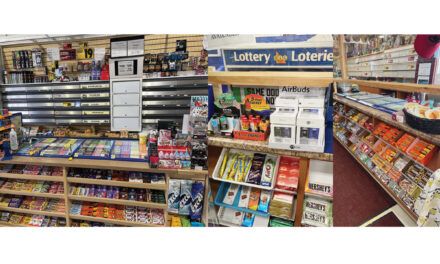
Meeting the Needs of Seniors
Golden opportunity lies in meeting needs of seniors
by: Angela Altass
The population proportion of seniors aged 65 and older has been increasing steadily over the past 40 years, according to Statistics Canada. Demographic projections show that this increase is expected to continue rapidly until 2031 when all baby boomers will have reached 65.
Seniors could represent between 23 per cent and 25 per cent of the total population in 2036 so it’s probably a good idea to start to look at how seniors view your establishment and what can be done to make your business attractive to them.
Many seniors want simple changes in stores, such as alterations to the layout and many prefer shopping in smaller stores that are closer to their homes, according to The Silvers Series IV: Retail Reconfiguration for Seniors report by Deborah Weinswig, managing director, Fung Global Retail & Technology.
“As the older population grows, neighbourhood stores are likely to become more commonplace, with major grocery, drugstore and dollar store chains catering to older shoppers via smaller stores that are close to residential areas,” says Weinswig’s report. “In grocery, convenience stores and local grocery stores cater well to the smaller basket shopping of older consumers.”
According to 2014 data from Nielsen, baby boomers and silvers aged 68 and older make more visits to small-store formats, such as convenience stores and dollar stores, than younger age groups do. Nielsen found that convenience stores are the only store type where baby boomers’ spending per basket exceeded that of millennials and generation xers.
“Demand for local convenience is likely to extend beyond the grocery sector,” states Weinswig’s report. “We expect the growth in the silver population to boost demand for proximity shopping in health and beauty categories as well.”
The global population of seniors aged 65 and older will account for one-third of population growth through 2035, according to the United Nations. Some of the convenience store chains in countries such as Japan are responding with renovations that widen aisles, lower shelves and stock more products that appeal to the older generation.
Statistics Canada 2016 census figures showed that seniors, at 5.9 million, were outnumbering children, at 5.8 million aged 14 and under, in Canada for the first time in the country’s history. The increase in the number of people over 65 has jumped 20 per cent since 2011. By 2031, about 23 per cent of Canadians could be seniors and by 2061, there could be 12 million seniors to just eight million children in Canada.
Convenience & Carwash Canada decided to talk to a few seniors to get a better understanding of what they might be looking for in a convenience store and to find out whether stores are fulfilling the needs and expectations of this growing age group.
For Wayne in British Columbia, friendly service is a key factor.
“We often feel as though we are forgotten or not as important as customers with all the focus on the younger shoppers,” he says. “I enjoy my local store because, as a family operation, they seem happy to see me and, depending on what I have shared with them, they take an interest in me. When I told them that my granddaughter was coming for a visit, they educated me on popular new items. They care and remember and that is step one to guaranteeing I will be back because they respect my patronage.”
Wayne thinks there are too many stereotypes regarding seniors in general.
“As a senior now I feel like a young man trapped in a senior’s body because I am equally comfortable with my granddaughter as I am with any retailer who is happy to see me as a valued customer and tries to appeal to my needs,” he comments. “I like to be treated with some respect. I prefer shopping at my local convenience store because I feel like they appreciate my business and have made me a part of their day and that is priceless.”
Location, store hours, carrying basic everyday staple items, competitive pricing, and well stocked seasonal items are all things that Wayne indicates are drawing factors for a convenience store.
“The local convenience store always seems to have what I forgot to pick up or ran out of and they are there to save the day,” he says. “They are there for my convenience as my local retailer, provide service with a smile and respond to my needs quickly and happily versus the big box stores. Our local retailer cares enough to ask us if there is anything we need that is not in store or for seasonal events and then they bring those items in for us.”
Wayne, who visits his local convenience store daily for coffee, newspapers, bread, butter, milk and seasonal treats, has high praise for the service provided there.
“The best part about our corner store is that they are there every day or night and I am hooked on their hot cocoa drinks every winter and the iced ones in the summer,” says Wayne. “Because I am a regular, I get a hot drink in the winter from the owner for being a regular shopper who looks like he needs a hot cocoa drink. I like that they always say hello and take the time to know me and my family. I feel obligated to support them because they make that effort. My father would call it salesmanship and customer service but I feel like they care about me and that I should care about them too by being a regular customer.”
Patricia from Prince Edward Island says she would consider shopping at a convenience store for occasional items if there was one situated close to her home.
“I would also consider going there if I needed something on a day when my regular store was closed,” she comments, adding that, although she admits it might not be feasible, it would be nice if a store could offer a service to deliver items to a senior’s home.
Lisa of Manitoba shops at convenience stores when she is in a hurry and doesn’t want to wait in line at a larger store.
“I am most likely to go to a convenience store if the other stores are closed or I need something quick, usually a baking or grocery item,” she notes. “I regularly buy gum, milk, pop and gift cards. My son smokes and as cigarettes are no longer as accessible as they used to be at the grocery store, cigarettes are one reason that people go to a convenience store.”
Reward programs can be a deciding factor when it comes to shopping, notes Lisa.
“I go to either Shell or Co-op convenience stores because they are both close to home or work and I also get rewarded for purchases with Air Miles or co-op dividends,” she says.
Older seniors are cost conscious and are therefore less likely to shop at convenience stores, says Lisa.
“I think if milk was priced equal to the grocery store, seniors may stop by to buy milk rather than go to the grocery store,” she remarks. “I find that the problem with buying milk at a convenience store is that they don’t sell large volumes so, not only is it more expensive, the expiry dates are not as far out as the stores that go through more volume of sales. The downside for stores in lowering the price and selling more volume would be that more fridge storage would be required.”
Younger seniors between the ages of 55 and 70 may not be as worried about price and are more likely to shop at a convenience store, says Lisa.
“Those who are 70 years plus grew up with a more frugal upbringing,” she notes. “Younger seniors are more active and not as concerned with saving money.”
Vera of Nova Scotia shops at convenience stores while traveling.
“When getting gas and there is a store attached to the gas station we will often go in and buy something like chips or another type of snack, especially if we are traveling on a weekend or late at night when larger stores are closed,” she states. “I don’t shop at convenience stores regularly. Maybe if they advertised lower prices on staples like milk and bread, I would consider it.”
Pat from Ontario says that although she personally doesn’t shop at convenience stores, her husband, Rod, buys lottery tickets at the local convenience store.
“The only things I would think of buying at the convenience store would be bread and milk but, to be honest, the convenience stores in our area don’t appeal to me,” she states. “They seem to carry a lot of junk and the stores aren’t very attractive. Competitive pricing would go a long way in attracting seniors as I find the mark-ups are too high, even on chocolate bars and other goodies.”
James of Ohio feels that such items as milkshakes and coffee, speed of service, less congested parking lots and clean stores could attract seniors to convenience store shopping.
“Some of the convenience stores that border on highways have filthy and outdated bathrooms,” he commented, “also, having extra handicap parking spaces would be helpful. Lastly, a special senior discount of 10-15 per cent would encourage sales besides coffee.”
Although he praises the pleasant staff and local ownership of his nearby convenience store, he says it is difficult to shop there when most items are 20 per cent more than at the grocery stores. He will mainly stop by when he has a craving for a milkshake or a donut and the local coffee shop is too expensive with slow service.
With the increasing senior segment of the population, it might be a good time to reflect on ways to gear the shopping experience towards those aged 55 and over and to ask older shoppers what could be done to cater more to their needs.


































